Forgotten battles. Murmansk offensive operation
By the spring of 1942, the general situation on the Eastern Front was developing quite favorably for the Soviet Union. The fascist troops were routed near Moscow, near Tikhvin, the Kerch Peninsula in the Crimea was taken. During the Anglo-Soviet negotiations, the principled agreement of the British leadership on the landing of three British divisions in Norway was determined (in case of success of the Soviet troops).
In the spring of 1942, the enemy concentrated 3 and 6 mountain divisions in the Murmansk direction, 388 infantry and 14 machine gun battalion were stationed on the isthmus of the Medium Peninsula, in the areas of Pechenga, Nickel and Kirkenes there were X. I am a mountain division, along the coast from Kirkenes to Allenfjord - 2-I infantry division.
In early April, the 1942 of the Murmansk Task Force of the 14 Army (commanded by Lieutenant-General VI Shcherbakov), which consisted of 3's rifle divisions and 4's brigades, was ordered to encircle and crush the West-Germanic grouping and reach the lines state borders with Finland. The main blow was planned to inflict the left flank of the army. For this purpose were intended 10-I Guards Rifle Division (former 52-rifle, commander Major General Krasilnikov), together with the 72 th naval rifle brigade (commander Colonel Molojaev) and 6-th separate deer-ski brigade (commander major Mozhai . Their main objective was to strike the fascist mountain divisions located in the area of Lake Chapre, in the direction of the north. The 14 Infantry Division of Lieutenant Colonel Khudalov operated on the right flank of the group. Marines marched from the coast of Motovka Bay.
The reserve army were 152-I infantry division and 5-I separate deer-ski brigade (commander Lieutenant Colonel Pozhidaev). Subsequently, the 14 Army was to strike the rear of the German forces stationed on the Isthmus of Sredniy, destroy them and reach the state border on the stretch from the coast of the Malaya Volokovaya Bay to Lake Chapr.
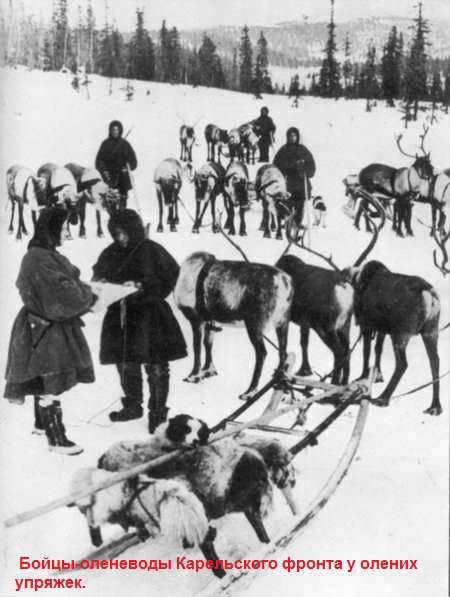
Before the North fleet the task was to land a tactical landing (6 battalions of the 12th separate brigade of the marine corps) behind enemy lines, on the southern coast of Motovsky Bay, to facilitate the breakthrough of the German defense in the direction of the main attack and to close the ring around the 6th Mountain Division. At the end of January, the Marine Corps brigade surrendered its defense area near the Western Litsa River to units of the 14th Infantry Division, and moved to the Polar area - Sayda-guba, where active preparations for the planned operation began.
By 21, the company of brigade intelligence senior lieutenant Grachev made an engineering survey of the route from Sayda-guba to the east coast of the Bolshaya Zapadnaya Bay, and the visual west coast to Cape Pikshuev. Found: in the area of the river small Face there is an unfinished bridge, and along the coast, practically to the zone of visibility of Cape Pikshuev, there are neither dugouts nor strong points. Only once a day before Pikshueva a patrol with a dog passes.
Due to inadequate weather, the duration of the operation was postponed twice. To comply with the secrecy of landing the paratroopers on the ships made only after sunset. At this time, the polar nature presented another unpleasant surprise. The exit from the lip was covered with spring ice. For ships with powerful engines, it did not cause much difficulty, but boats, especially with a wooden hull, could damage not only him, but also the screws. For their wiring command decided to use the minesweeper. But at the very last moment, the steering wheel of the improvised "icebreaker" broke and he lost control.
Then an extraordinary decision was made: sailors of MO boats, free from watch, using crowbars, sledgehammers, hooks and axes, everything at hand began to crack ice in front of the stakes of their ships. This allowed the boats, albeit slowly, but to leave the ice trap. The actual offensive operation began in the early morning darkness of April 28, 1942, with a three-hour artillery preparation. Aviation Front bombed in accordance with a single plan.
The offensive of our troops was for the Germans a complete surprise. But since the 14 army didn’t receive artillery reinforcement, and only had regular artillery of the formations and an army cannon regiment, and there were not too many shells, the main purpose of the artillery preparation was to destroy the German fortifications and reliably suppress the enemy’s firepower. that immediately affected the pace of the offensive. Part of the 10-th Guards Division and the 72-th Marine Brigade, only by the end of the first day of fighting on the main line, managed to advance to a depth of 1-2 km. The 6-I separate deer-ski brigade, advancing to the left of the guards, made a high-speed throw over the tundra, trying to break into the rear of the enemy defense, but it turned out to be tied with heavy fighting for the height of 341.1. Two regiments of the 14 Division, advancing on the east bank of the r. The Western Persons were also stopped by the strong fire of the German mountain shooters. It was only on the second day of the attack that the enemy was able to be knocked out from the first line of defense, but the reindeer-ski brigade continued to stagnate, being subjected to strong counterattacks of the German 2 of the mountain rifle division deployed here. In addition, the commander of the 19 mountain corps, Lieutenant General Schörner, sent part of the forces from the second echelons defending in the center, so that putting the 5 reindeer-ski brigade into battle could not have a special impact on the course of events. With the efforts of the new German reserves, the 10 ski battalion was surrounded and fought for two more days in the environment, and the 7 battalion was pushed back to Lake Chapre. At the same time, the 3 ski battalion suffered heavy losses.
Night 28 April landing party composed 5 minesweepers, 4 patrol ships, 12 MO boats 16 patrol boats and 14-trawlers boats under the cover of the destroyer and 2 patrol ships, he landed a brigade of marines (6165 people commander Colonel Rossokhin) and reconnaissance fleet headquarters, as part of 170 man (commander Lieutenant Frolov), near Cape Pikshuev.
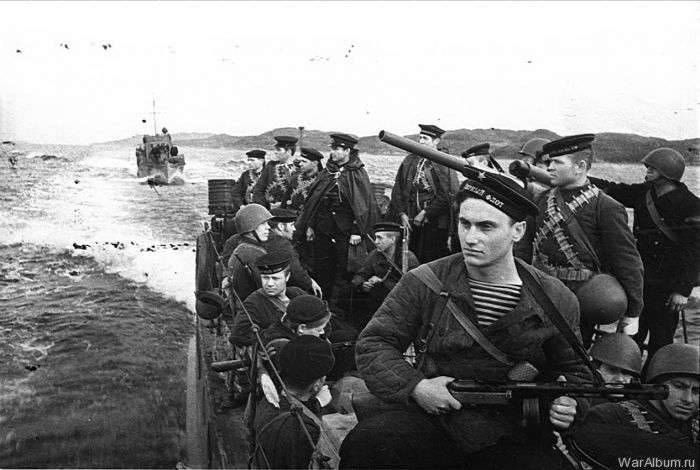
The paratroopers were armed mainly with small rifle weapon. Each relied either a machine gun or a rifle, 200 ammunition, 4 grenades and a dry ration for 15 days. The brigade battalions included 28 machine guns and 60 light machine guns, 24 mortars and 7 artillery guns. The guns of a caliber larger than 45-mm were absent in the brigade, therefore the success of the landing was based on the surprise landing and support by air strikes and ships. In addition, it was taken into account that the cape was located far from the nearest strongholds of the mountain shooters off the coast of Motovsky Bay, and this allowed the landing party to have time to turn around before the enemy could organize serious resistance here.
Since the enemy still had superiority in the air, the dark period of the day was chosen for the transition, although the command of the 14 Army was not satisfied. Boats could not take on board heavy weapons, but in terms of maneuverability, invulnerability and the ability to act independently, they were superior to ships of any other class. With this, the army command could not agree. Somewhat earlier, a group of motor boats of the Defense Ministry came out to Motovsky Bay, which was supposed to conduct a demonstration of a false landing in the area of Titovka.
On the traverse of the Pikshuev lighthouse, the boats sharply turned toward the enemy shore and began landing in 10 minutes. At the approach of the scouts to the landing site, two white clouds of shells exploded along the course of the boats, but the boats slipped through the danger zone at maximum speed. The rest of the detachments went, no longer hiding, in the middle of Motovka Bay. Before the landing of the first throw squad had finished, the minesweepers and transports towing the pontoon moorings approached the designated areas. The landing went according to plan and in fact without any opposition from the enemy. The Germans did not expect a landing, and resistance was put forward only in two points out of five. The fascists opened a lively artillery skirmish only on the right flank, but the support ships (the destroyer Loud, the Rubin and Smerch sentry ships suppressed enemy fire from the shore. During the 3 hours, the Rubin's patrol ship led an artillery duel with three batteries in Titovka lip, diverting fire and allowing the landing force to land. During this time, more than six thousand people went ashore without loss.
The headquarters and command post of the brigade of Colonel Rossokhin located in the area of a small lake. The brigade reserve, the 6 Battalion of Captain Savchenko, is also located here. By eight o'clock in the morning, on April 28, the coast of Cape Pikshuev was empty, all the landing battalions had gone along the indicated routes of movement. In the center, on the direction of the main attack, was the 2 th battalion of Captain Nezhentsev, the 5 th battalion of Captain Khizhnyakov advanced to his left. On the left flank of the brigade was the 4 th battalion of Captain Petrov.
It was assumed that on the second day of the offensive it would be possible to reach the area of the village of Bolshaya Zapadnaya Litsa, on the third day it was planned, by connecting with parts of the 14 Army, to close the ring around the "West Face" parts of the German mountain corps.
The first three days of troops with battles stubbornly moved deep into the enemy defense. Rocky terrain and off-road made it difficult to attack. Since the battalions of the Marine Corps were divided, they had to act independently. The first in battles with 68-m scooter battalion 6-th mountain division entered the battalions of Symonenko and Nezhentsev.
The 2 Battalion was able to defeat the strongpoint of the mountain riflemen with a sudden and swift strike, and continued the task. The enemy began to retreat in an organized manner. The next day, four enemy battalions, supported from the air, were already against our landing force. Despite this, the battalions of Simonenko and Khizhnyakov gradually moved into the depths of the enemy defense. The naval aviation came to the aid of the paratroopers, air battles flared up in the air. After fierce battles, the 4 Battalion captured an important German stronghold, capturing and destroying more than a dozen pillboxes and bunkers, 6 machine guns and 4 mortar positions. Later, it turned out that our paratroopers were confronted here by the elite battalion of the 6 German mountain division, which bore the name “Heroes of Crete” for the seizure of the island of Crete.
By May 1, the Soviet landing force occupied a bridgehead of 15 km and 12-14 km in depth on the shores of Motovka Bay and Bolshaya Zapadnaya Litsa Bay. However, the brigade commander had to enter into battle his last reserve - the battalion of Captain Savchenko. In a fierce battle, the 1 th battalion managed to crush the fascist stronghold at one of the heights, and the 1 th company of Lieutenant Lukyanov went to the road to Titovka, although it was not possible to ride this important traffic artery. In this battle, the brigade reconnaissance company lieutenant Grachev showed himself well. She made a daring raid on the enemy’s rear and went directly to the area of the village of Bolshaya Zapadnaya, where she destroyed the escort and, having captured the prisoner, returned without loss.
On this, in fact, the advance of the paratroopers deep into the captured bridgehead stopped. The enemy fiercely resisted, constantly turning into counterattacks. So, the 3-th company of the 1-th battalion for four hours reflected the continuous attacks of the fascists. The company’s losses amounted to more than half of the personnel, but the position was retained. The Germans lost in battle more than a hundred and fifty soldiers and officers.
It will become known later that the troops of the 14 Army, although they broke through the German defenses on the left flank, were also unable to build on their success. The reserve 152 rifle division of Colonel Vehin, reinforced by the 64 artillery regiment and the 3 battalion of the 471 artillery regiment of the High Command, was transferred to the western coast of the Kola Bay with a great delay and as a result was not only unable to support the attacked units, but and suffered unjustified losses. To all this, the polar spring showed its severe temper. During the preparation of the operation a deep thaw occurred. Began a strong melting snow. The only dirt road from Cape Mishukova to the Bolshaya Zapadnaya River has become wilder and has become completely unsuitable for use. Early in the morning of May 3 a blizzard suddenly erupted that raged for three days. The wind reached hurricane force, everything sank in a snowy whirlwind. The road is icy. Traffic has stopped.
The Buran captured the 152 Division on the march. Only the advanced battalion of the 480 Infantry Regiment was able to reach the West Face River. The remaining parts waited out the snowstorm on the road, without any possibility of warmth. The marines of the 12 Brigade were in a similar position. 5 May they were forced to go on the defensive.
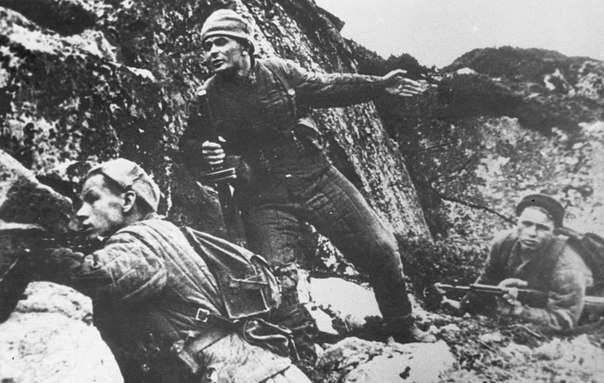
The warriors were extremely exhausted, their faces blackened by frost and wind. Eyes inflamed by blinding white snow were incessantly watery. Out of food, were running out of ammunition. Every day he made new sacrifices in the form of dead, wounded, frostbitten, and blinded paratroopers. Especially there were a lot of soldiers with frostbite legs. And the reason was the equipment of the paratroopers, which consisted of a wadded jacket and trousers, warm linen, a raincoat and American Lend-Lease shoes. These shoes, as it turned out after the landing, easily missed the water. Severe frosts froze wet shoes. It is this "feature", obtained from the US shoe and caused a massive frostbite of the feet.
As a result of the uncoordinated actions of the landing force and our army units, the enemy rather quickly eliminated the resulting gap on its right flank, and threw all the freed up reserves against the paratroopers of the 12 brigade.
Although at night the destroyers Gremyashchy, Smashing, Grozny and Loud entered the Motovsky Bay and provided artillery support to the marines, but this was not enough to keep the captured lines. The enemy by all means tried to dump the Marines into the bay. Severomortsy were dead.
In the evening of May 5, when the hurricane subsided somewhat, the brigade was reinforced with several marching companies, the 9-m separate ski battalion (commander captain Karpov) and the 3 battalion of the 125 rifle regiment. The reinforcements landed on the southern coast of the bay at Cape Pikshuev and without delay entered into battle. In turn, the commander of the 19-m mountain corps, Lieutenant-General Schörner, pulled up six fresh battalions from the reserve from Pikshuev, including from the 2-th mountain division from under Kirkenes.
6 May the Germans took to the coast of Motovka Bay. This could lead to the blocking of the thinned brigade battalions right on the black cliffs of the cape. The 9 ski battalion was transferred to this area, and to its right slowly, clinging to each boulder, the 3 landing battalion retreated, to the left - 4. The rest of the landing battalions under the cover of this kind of barrier began to retreat with battles to the line of the nearest heights, where they entrenched themselves. That day the sapper of the 5 th battalion G. Borovkov accomplished the feat. With his legs broken by the explosion of a mine, he covered the withdrawal of his unit. When the German arrows surrounded G. Borovkov, he blew himself up and the Germans who had fallen upon him with a grenade. The May hurricane did not allow the commander of the 14 Army Lieutenant-General V.I. Shcherbakov use his main reserve, 41, and a guards mortar regiment.
At the most difficult moment of May 7, the 3 sea battalion (commander captain Prussenko) from the 125 regiment was brought into battle. Desperate counterattack sailors were able to stop the enemy, pushing him to their original positions. The 8 and 9 in May, the fascists, pulling up fresh reserves, launched a decisive attack on the positions of the 2 and 6 battalions. By this time the attack our army units finally exhausted. The Supreme Command made a decision to stop the offensive and, with a directive from 10, ordered the defense to proceed.
10 May over the wounded brigade, finally, the sun appeared, and immediately over the hills began air battles. The North Sea pilots did everything so that not a single bomb fell on the marines. Since the offensive of the rifle divisions on the river Bolshaya-Zapadnaya, the Persons choked, and the entourage of the western-facing enemy grouping did not take place, it did not make sense to leave the landing party at Cape Pikshuev.
On the night of May 11, an order was given to prepare for the evacuation and bring the brigade to the coast. 12 and 13 May paratroopers were taken on board ships and boats.
Landing on boats, transfer and disembarkation on the east coast of the Bolshaya Zapadnaya Bay, took a few minutes from boats, and the boats managed to turn back and forth several times. Despite the incessant German air raids, there was not a single hit, either at the berths or at the boats.
Closer to the night of May 13, the last paratroopers were removed from the coast. The enemy almost on the shoulders of the Marines escaped to the shore of the Motovka Bay and opened fierce mortar fire on the boats. But the evacuation ended successfully.
After that, the 12 Brigade, after making a foot transition, concentrated around the village of Ura-Guba and entered the reserve of the commander of the 14 Army. The paratroopers rested and received reinforcements, and then they were transported to the Rybachiy peninsula.
The operation in April-May 1942, unfortunately, did not achieve its goals, but the German command was forced to stop preparing for the offensive on the Kola Peninsula. In this direction until October 1944, the war took on a classic positional character.
Sources:
Platonov V. Admiral's Notes. M .: Voenizdat, 1991. C.202-212.
L. Zhurin. Tragic operation: unsuccessful offensive of our troops in April-May, 1942, // Science and Education. 2005. No. 6. C. 67-69.
Kovalev S. Chronicle of the forgotten offensive // Sea collection. 2005. No.3. C. 73-76.
Kiselev A. A. The war in the Arctic. Murmansk: MONMTSSO, 1995. C. 99-105
Platonov A. The experience of the first Soviet amphibious operations // Landings of the Great Patriotic War. M: Yauza, Eksmo, 2008. C.208-220.
Kraskin, A. The tragedy of the Murmansk offensive 1942 of the year // Komsomolskaya Pravda. 7 May 2010.
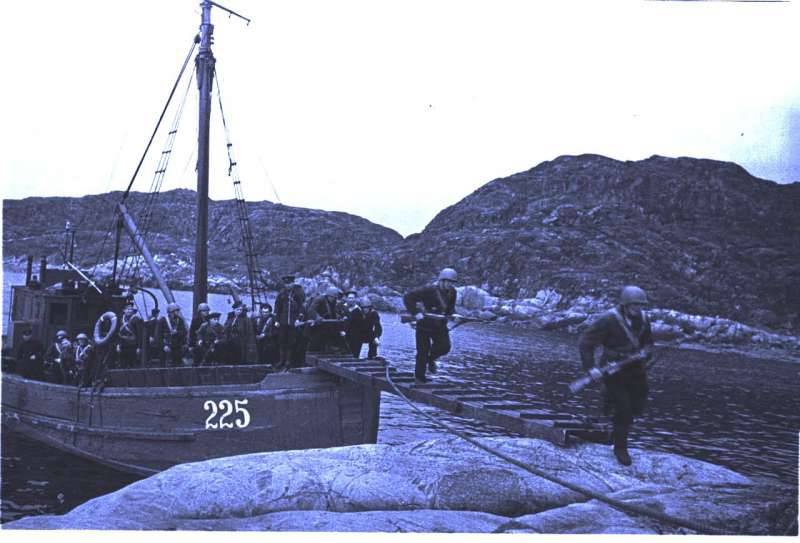
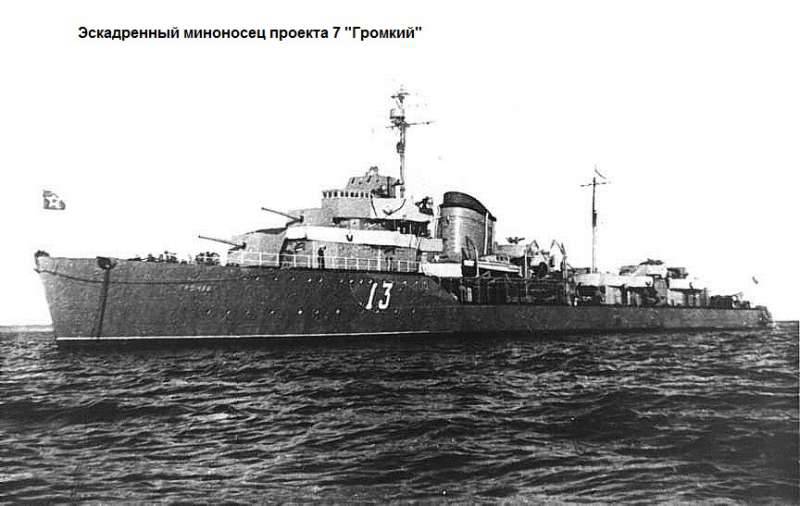
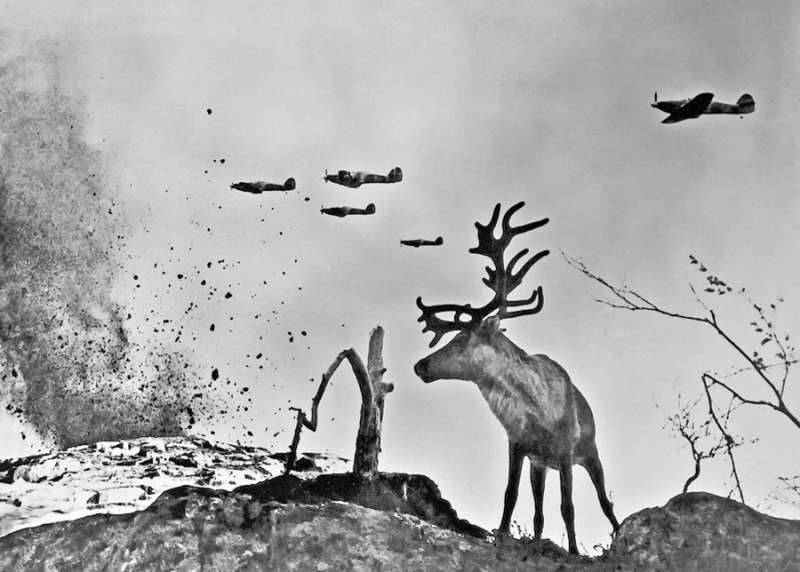
Information